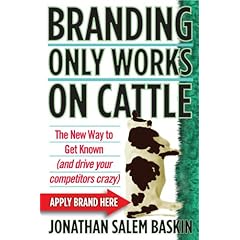Good news: I’ll be returning to the classroom for the first time this Spring since “Marketing with Digital Media” at Columbia College way back in the mid-90s; teaching a new course that I’ve developed this time at my alma mater .
 Here are the main areas that I’m planning to cover in Web Analytics: Online Marketing Measurement:
Here are the main areas that I’m planning to cover in Web Analytics: Online Marketing Measurement:
- Develop a plan to measure online marketing based on solid best-practices
- Know the essential technology of Web analytics and industry terminology
- Learn how to use industry-standard tools like Google Analytics and Quantcast
- Prepare meaningful actionable reports that communicate essential findings
- Make fact-based recommendations and identify opportunities for optimization
Analytics has so many definitions – depends who you ask. What do people want to see?


